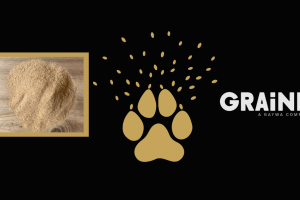Brewer’s yeast, an unassuming by-product of beer production, is much more than a simple ingredient in the brewing process. These tiny microorganisms, responsible for the fermentation of beer, hold a fascinating variety of health benefits and applications that go far beyond brewing. Whether as a dietary supplement or an additive in pet food, we take a closer look at the amazing properties of brewer’s yeast and discover why it deserves a place in our diet.

What is brewer’s yeast?
Brewer’s yeast, scientifically known as Saccharomyces cerevisiae, is a type of yeast used for the fermentation of beer. It converts sugar into alcohol and carbon dioxide, which contributes to alcoholic fermentation. Once the fermentation process is complete, the brewer’s yeast is skimmed off to extend the shelf life of the beer. The remaining microorganisms are rich in proteins, B vitamins and minerals.
Different types of brewer’s yeast
Brewer’s yeast comes in different strains, each of which works under different conditions and influences the taste of the beer. The types differ in their chemical structure. However, brewers tend to categorize yeast according to its brewing-relevant properties in order to ensure the quality and taste of the beer.
A distinction is also made between active and inactive brewer’s yeast. While the yeast cells in active brewer’s yeast are still alive and able to multiply and carry out fermentation processes, the microorganisms in inactive brewer’s yeast are deactivated or killed by heat. Despite the heating of the brewer’s yeast, the vitamins and minerals remain intact. This means that inactive brewer’s yeast can be used as a food supplement. Due to the properties of active brewer’s yeast, it is used in the brewing process.

Brewer’s yeast in pet food
Brewer’s yeast is used in dog, cat and horse feed to provide various health benefits, including improved digestion thanks to probiotic properties, healthy skin and shiny coat due to B vitamins it contains, as well as strengthening the immune system and possible regulation of blood sugar levels.
Brewer’s yeast and environmental compatibility
Brewer’s yeast is environmentally friendly as it is a by-product of beer production and would otherwise be disposed of as waste. It is biodegradable and requires less energy to produce than other foods. It is also used as a fertilizer in agriculture, which can reduce the use of synthetic fertilizers.
Brewer’s yeast @Grainli®
At Grainli®, we recognize the full potential of brewer’s yeast not only as an essential element of the art of brewing, but also as a valuable resource with multiple health benefits and sustainable applications. As brewing product experts, we want to promote the reuse of this seemingly waste product and have integrated inactive brewer’s yeast into our pet food portfolio.
Whether spray-dried brewer’s yeast with protein contents from 38 % or drum-dried products with protein contents from 42 %, Grainli® is the expert for your individual enquiry.
Inactive brewer’s yeast is rich in nutrients and offers positive health effects for pets. It not only supports improved digestion and a healthy skin and coat, but also strengthens the immune system and promotes vitality in dogs, cats and horses.
By integrating brewer’s yeast into our pet food portfolio, we are focusing on sustainability and helping to reduce food waste and environmental impact. Brewer’s yeast, a by-product of beer production, is thus put to good use and becomes a valuable component of our environmentally conscious product line.
The historical background of brewer’s yeast dates back to the earliest civilizations, where it was used to ferment beer thousands of years ago. From the ancient Sumerians to ancient Egypt and medieval monasteries, brewer’s yeast played a crucial role in the art of brewing and was also valued as a remedy. Although the understanding of microorganisms came later, pioneers such as Louis Pasteur and Emil Christian Hansen laid the foundations for the modern brewing industry in the 19th century by researching the role of yeast in fermentation and isolating pure yeast strains. Today, brewer’s yeast is indispensable for the art of brewing worldwide.
Brewer’s yeast is undoubtedly more than just an ingredient for beer. It is a true superfood with a wealth of nutrients and health benefits. From improving digestion and promoting skin health to increasing energy and vitality, the product offers numerous reasons to include it in the daily diet or as a supplement to pet food.
Cheers to good health!






